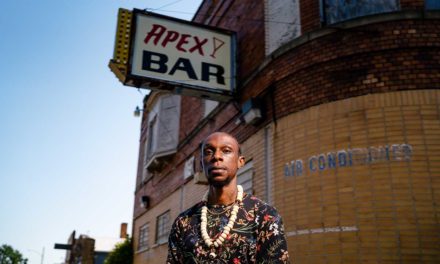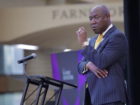A special Election 2020 report looks at the changing — and diverse — make up of voters in Wayne County and the impact they may have on the presidential election.
Read full transcript
Historically, Democrats can count on Wayne County to vote for their candidates in presidential elections. Still, its voters can have a crucial role in the outcomes. Before we get into the politics of the county, let’s look at the demographics. We looked at data from the census and checked in with demographer Kurt Metzger. At the core is a drastic drop in people. County wide almost 600,000 people have left since 1980. Outmigration mostly to Macomb and Oakland county has been the trend for decades. It’s also much younger than the neighboring counties
Kurt Metzger – Demographer It’s median age is 37, almost three years less than either Macomb or Oakland. Big deal, people may not be too excited about median ages, but you’ll find that they have more kids under five. A higher share of their total population tends to be that under 18. Wayne County has that combination of single parent families, large percentage of single parent families coupled with immigrant groups that tend to have higher birthrates.
Only 25 percent of the population has a college degree and the median income is forty six thousand dollars. About ten thousand dollars below the state average while the region continues to get more multicultural. Wayne County stands out as more diverse than Oakland and Macomb.
Kurt Metzger – Demographer That’s the only county in the state where the white non Hispanic population is not in the majority. It’s actually just less than 50 percent white
Metzker gives a good snapshot of the differences in diversity as you move from one end of the county to the other.
Kurt Metzger – Demographer Where you’ve got the Gross Pointes on one side which is very higher income higher education tends to be majority white with the Gross Pointe Farms is not so much. Then you come to Detroit, which is still 80 percent African-American, but you also have done still that large Latino community that’s concentrated in Southwest, feeling somewhat threatened by gentrification. And you’ve got Highland Park, which is very poor, very African-American. And then you get to Hamtramck, which is this mixture of Bangladeshi, Yemeni, African-American, and then you move to Dearborn and you have Dearborn, Dearborn Heights.
Kurt Metzger – Demographer You have a large Middle Eastern population, Lebanese, Syrian, Iraqi, primarily Muslim, not the Christian that tend to be in Oakland and Macomb. Allen Park down to Brownstown, Flat Rock, again it tends to be more of a lower income, lower education, white, primarily white population, Lavonia and Westland, their kind of areas that tend to be whiter. Major growth areas in Wayne County have been Plymouth, Northville, Canton Township, and that Sumpter and Brownstown, all those outlying communities.
So that’s a look at the county as a whole, but Detroit makes up a large part of it. Let’s dive deeper into population changes in this city. It has shrunk by 40,000 people since 2010 alone.
Kurt Metzger – Demographer In the last decade, all of a sudden, African-Americans said it’s time for us to go to. You know, that now you had openings in the suburbs, both because housing was available, but also because things have changed. And we don’t have housing covenants and people could have the wherewithal you can move into communities.
Despite the overall drop in population, we’ve seen a new kind of growth in pockets of the city. The good news is the exodus may be slowing down.
Kurt Metzger – Demographer I think the population is starting to stabilize, many of the neighborhoods with the movement of Quicken downtown and the redevelopment of the downtown area you’ve started to see more young people moving in. A lot of demand for housing in Detroit. It’s developing up toward new centers, developing out toward Corktown. But it is more so a white population moving in again. That tends to be every city that has come back over time has seen itself become whiter.
So overall, in Wayne County, we see a smaller, younger and more diverse county than in decades past. Those add up to a voting population that still leans majority Democratic. In 2016, Hillary Clinton got 66 percent of the vote and in 2018, 70 percent voted for Gretchen Whitmer. Pollster Ed Sarpolus explains how Democrats keep gaining momentum.
Ed Sarpolus – Pollster So Wayne County is still a Democratic base. Republicans are finding a harder time to count on western Wayne County is where for their votes because it’s much more modest income.
The county wide melting pot has started to change some suburbs.
Ed Sarpolus – Pollster People don’t realize that we’ve been multicultural for a long time and so that shift now is impacting these other suburban cities. Canton is still Republican leaning, but that’s changing. Lavonia is changing because of who is moving into those population areas.
Whether Wayne County plays a key role in the 2020 presidential election will likely depend on one thing, turnout
Kurt Metzger – Demographer It comes down to Detroit. It comes down to some other communities around Detroit, can you get people to the polls? And if Detroit comes out strong, that’s going to, that’s gonna make a big difference statewide as well. So it’s a matter of can you get Detroiters to believe that their vote makes a difference? And that’s a tough, that’s been tough for a long time.








